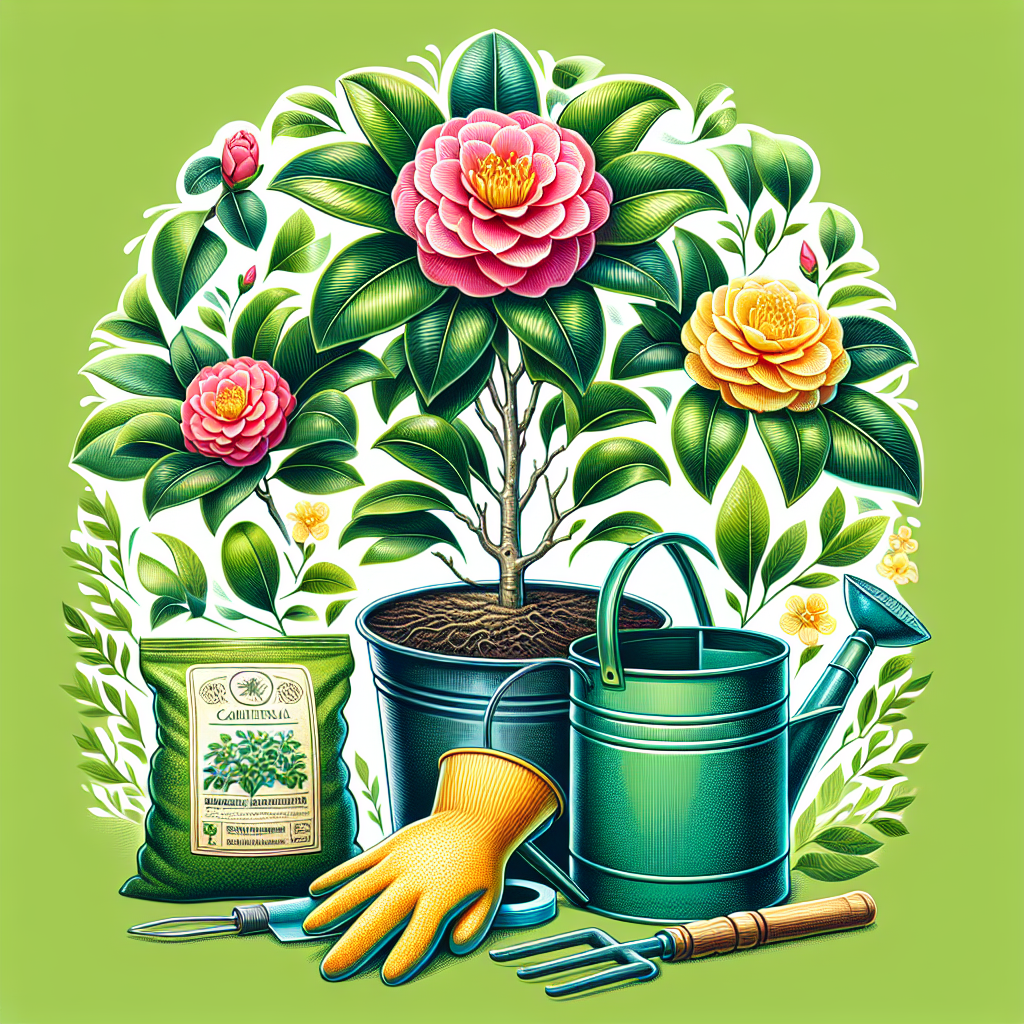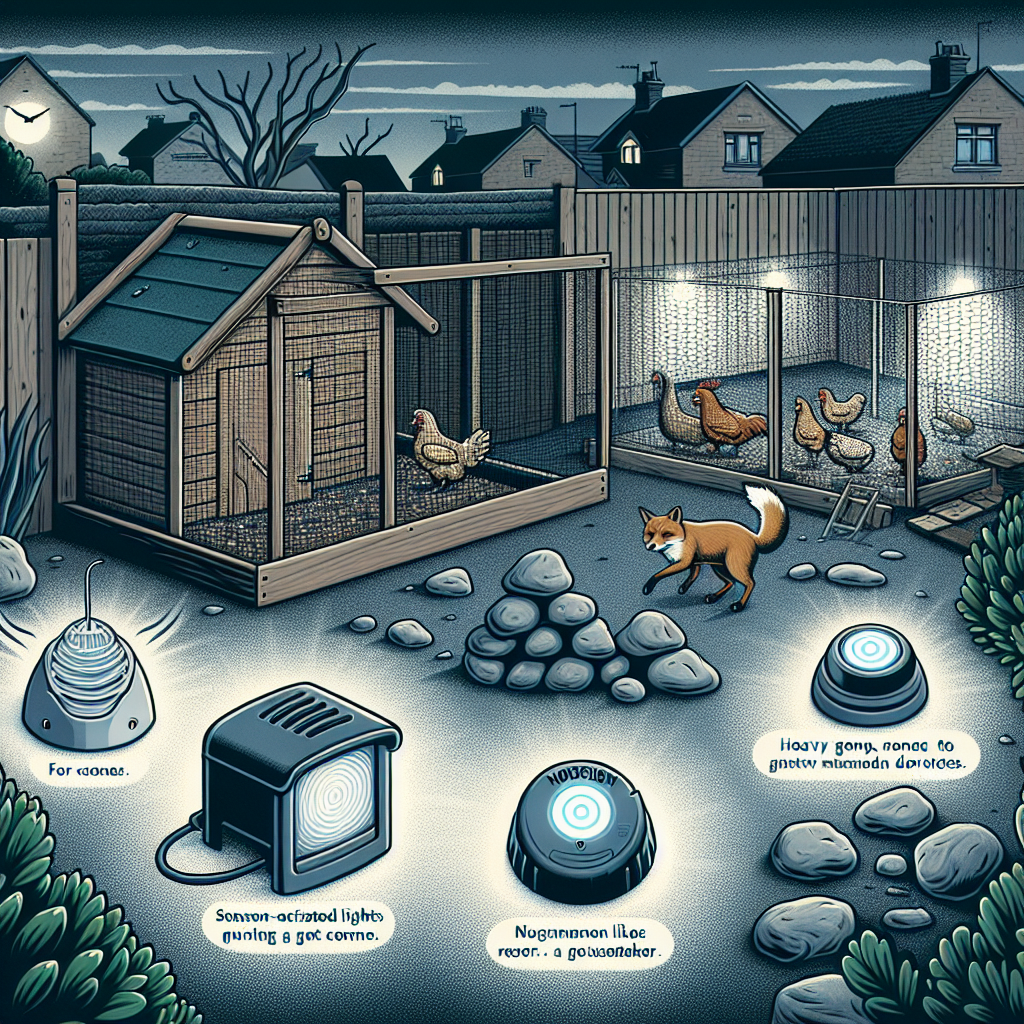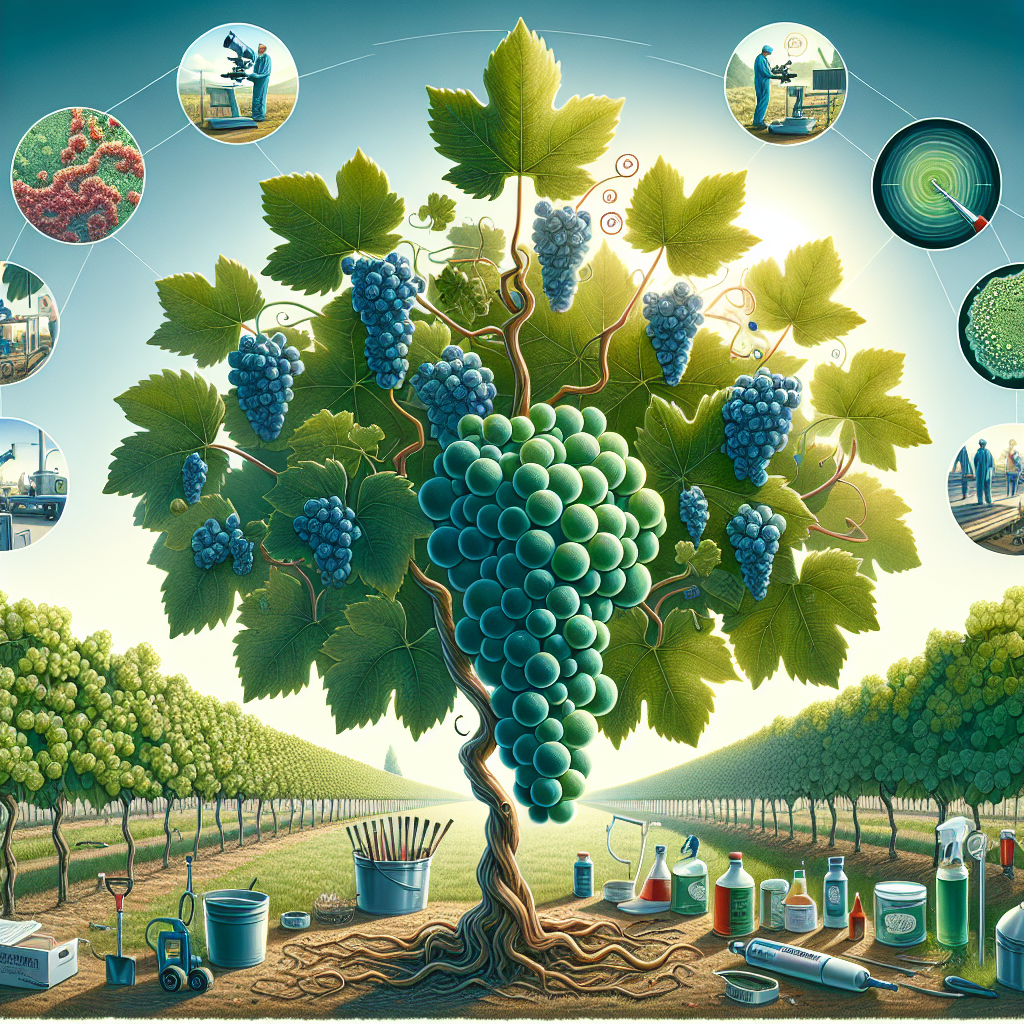How to Prevent Yellow Leaves on Camellias
Published April 4, 2024 at 11:41 pm
Discover the secrets to maintaining vibrant, healthy camellias with our expert guide on preventing the common issue of yellowing leaves, ensuring your garden remains a flourishing showcase of these captivating flowers.

Understanding Yellow Leaves on Camellias
Camellias, with their lush foliage and stunning flowers, are a popular choice amongst garden enthusiasts. However, spotting yellow leaves can lead to concern. Before you worry, let’s delve into why this may happen.
Common Causes of Yellowing Leaves
Yellow leaves can be a symptom of several conditions, ranging from environmental stressors to disease. Some common causes include improper watering, poor soil conditions, and inadequate nutrition.
Another key factor could be inconsistent light exposure, which can stress the plant. Camellias require a delicate balance of light and shade to thrive, as further discussed in our article on creating a pollinator-friendly garden, which explores the importance of proper lighting for plants.
Nutritional Needs for Healthy Camellias
Soil Quality and Fertilization: It’s vital for Camellias to reside in nutrient-rich, well-draining soil. Consider a soil test to ensure your plant is getting what it needs.
A specific aspect to look out for is the iron content, as iron deficiency can lead to chlorosis, a condition causing yellowing leaves. Products like Ironite Mineral Supplement by Pennington are often recommended by gardeners to tackle such deficiencies. According to reviews, this product has been praised for its efficacy in greening up plants that lack essential nutrients.
Find This and More on Amazon
Effective Watering Practices
Watering: Overwatering or underwatering can lead to yellow leaves. Camellias prefer consistently moist soil, but not waterlogged. A balanced approach to watering is essential for the health of these sensitive plants. Try using self-watering systems or moisture meters to keep the watering in check.
For instance, the Aqua Globes Glass Plant Watering Bulbs have gained attention for their utility in maintaining the appropriate soil moisture. While some reviewers suggest they are more decorative than practical, others have found them a helpful indicator of when the soil begins to dry out.
Find This and More on Amazon
Protecting Camellias from Environmental Stress
To shield your Camellias from environmental stresses like extreme temperatures or wind, it’s crucial to choose an optimal planting location. This echoes our guidance on harvesting tips for vegetable gardening, reflecting how location can affect plant health.
Key Aspects of Camellia Care
Pest and Disease Management: Pests and diseases can stress your Camellias, leading to yellowing leaves. Regular inspections help prevent infestations or infections, ensuring that your Camellias stay healthy and vibrant.
Products like Neem Oil by Garden Safe are often sought after for their organic pest control properties. Gardeners commend its ability to manage pests without introducing harsh chemicals to the garden, making it a green thumb’s ally in maintaining plant health.
Find This and More on Amazon
Creating the Ideal Camellia Habitat
Like camellias, many plants, including those illuminated in the article about winter vegetable gardening tips, demand an environment that caters to their specific needs for optimal growth.
Ensuring your camellias have the right conditions is a step towards a stunning garden. Whether it’s adjusting the pH of the soil or simply moving them into a spot with dappled sunlight, every small change can make a significant difference.
Seasonal Tips for Camellia Care
Camellias have seasonal needs, such as mulching before winter for protection or pruning after blooming to encourage new growth. By addressing these, you cultivate not just growth but resilience against yellowing leaves.
Recognizing the seasonal needs of plants, akin to the practices praised in the pollinator-friendly garden guide, can significantly improve the vigor and health of your camellias.
Final Thoughts on Preventing Yellow Leaves
Keeping Camellias vibrant and free from yellow leaves involves a combination of care, vigilance, and timely intervention. It’s a journey much akin to nurturing a flourishing garden, where attention to detail and a little bit of love goes a long way.
Remember, healthy Camellias start with understanding their needs deeply, just as one would with any other plant in their garden. It’s about creating harmony between the plant, its environment, and the nurturing it receives from you.
Identifying Signs of Stress in Camellias
Yellowing leaves are often the first sign that your camellias may be stressed. Beyond color change, look for signs such as wilting, leaf drop, or stunted growth which could indicate underlying issues.
Observing your plants regularly is crucial, as early detection can make all the difference. Addressing problems when they first appear is key to maintaining the health of your camellias, just as you would in preventing issues in your winter vegetable garden.
Proper Pruning Techniques
Pruning: Correct pruning helps maintain the plant’s shape, promotes better airflow, and can revitalize your camellias. Prune to remove dead or yellowing leaves, as well as any branches that seem to be affecting the plant’s health.
The art of pruning is not just about aesthetics but about plant health too. By removing unhealthy parts, you encourage the growth of new, vigorous branches, similar to the advice given for maximizing your harvest in vegetable gardening.
Choosing the Right Soil Amendments
Amending Soil: Sometimes the existing soil may not meet the nutritional demands of camellias. Adding organic compost or specific soil amendments can improve the quality of the soil and provide your camellias with the necessary nutrients.
For instance, Espoma Organic Bio-tone Starter Plus has received positive feedback for not only improving soil structure but also for providing a boost to new and established plants through its balance of natural ingredients.
Find This and More on Amazon
Dealing with Soil pH Imbalances
Soil pH: Camellias thrive in slightly acidic soil. If your soil is too alkaline, it can prevent the absorbtion of necessary nutrients, leading to yellow leaves. Soil pH testers are available to help you keep track of your soil’s acidity levels.
Amending soil with sulfur or using soil acidifiers can also help adjust the pH level. Take cues from how you might adjust the environment for other plants, like peace lilies, to provide optimal growing conditions.
Mitigating Pest Problems Before They Escalate
Pest Detection: Keep an eye out for pests such as scale, aphids, or spider mites. These insects can quickly cause damage and lead to yellowing leaves if not controlled.
A proactive approach to pest management is essential, much like the practices outlined in creating a pollinator-friendly garden, where the focus is on maintaining a healthy, balanced ecosystem.
Choosing the Right Camellia Varieties
There are numerous camellia species and varieties, each with its own particular set of needs. When selecting a camellia for your garden, consider the specific care requirements and whether they match your climate and soil conditions.
Understanding the various types of camellias and their preferred environments will help you create optimal conditions, similar to how you would choose the right dracaena variety for low-light settings.
Water Quality and Camellia Health
Water Quality: The type of water you use can have an impact on your camellias. Hard water, for example, can introduce excess minerals that may harm the plant. If possible, using rainwater or distilled water can help prevent these issues.
Just as we pay attention to the water needs of other plants, like English ivy for purer air in our homes, we should ensure our camellias receive the right quality of water for their health.
Mulching and Root Protection
Mulching: A layer of mulch can help maintain soil moisture, regulate temperature, and reduce weed competition. Organic mulches, such as pine bark or straw, can also improve soil conditions as they decompose.
Mulching is as important for camellias as it is for other garden staples, reflecting the advice on mulching found in our winter vegetable gardening tips, aiding in plant protection during colder months.
Fertilization Timing and Technique for Camellias
When to Fertilize: Fertilizing at the right time can prevent yellow leaves by providing essential nutrients when the camellias need them the most. The best times are usually in early spring, just before the growth period, and after they finish blooming.
Using a slow-release fertilizer ensures a steady supply of nutrients. A popular choice is Osmocote Smart-Release Plant Food, which many gardeners have found effective for keeping their camellias and other plants healthy and vibrant throughout the growing season.
Find This and More on Amazon
Enhancing Camellia Immunity with Proper Care
Boosting Immune Health: Just as you might take steps to bolster your own immune system, providing care that enhances the immunity of your camellias is crucial. This includes giving them the right amount of water, light, and nutrients, as well as protection from harsh environments.
The healthier a plant is, the better it can resist pests and diseases that could cause yellow leaves. It’s similar to how you ensure the health of indoor plants, like nurturing spider plants in low-light conditions, by creating an environment conducive to their well-being.
Maximizing Blooms While Preventing Yellow Leaves
Encouraging Blooms: While pursuing abundant camellia blooms, it’s essential to avoid practices that might contribute to leaf yellowing. This includes avoiding over-pruning and over-fertilizing, which can stress the plant and trigger leaf discoloration.
Focus on gentle care and appropriate nourishment practices, much like the approach you would take in fostering delicate flowers such as those discussed in the article about nurturing ivy in low-light conditions.
Diagnosing Camellia Diseases
Recognizing Disease Symptoms: Yellow leaves can sometimes be a sign of a disease such as camellia leaf gall or root rot. Identifying these issues early can save your plant. Look for out-of-place textures, spots, or growths on the leaves and base of the plant.
Diseases should be addressed promptly, and often a fungicide is needed to control the problem. One such recommended product is the Bonide Fung-onil Fungicide, which has been reviewed as a solid defense against a multitude of fungal diseases in garden plants.
Find This and More on Amazon
Assessing the Impact of Climate on Camellias
Climate Considerations: The local climate can greatly influence the health of your camellias. Extreme heat or cold, and sudden temperature fluctuations can stress plants, leading to yellow leaves. It’s critical to understand your climate zone and choose camellia varieties that are best suited for it.
Creating a microclimate or providing shade during the hottest part of the day can also help protect your camellias, as mentioned in our Boston fern article, referring to the importance of controlling the conditions in which you grow your plants.
Watering Systems and Tools for Optimal Hydration
Hydration Solutions: Consistent moisture levels can be maintained with the help of various watering systems like drip irrigation or soaker hoses, which provide water directly to the roots and help prevent overwatering and underwatering.
Products like the Rain Bird Drip Irrigation Kit are highly rated for their ease of installation and effectiveness in maintaining a perfect watering schedule for sensitive plants like camellias.
Find This and More on Amazon
Strategic Planting for Hardy Camellias
Location Selection: Planting your camellias in the correct spot can prevent many stressors that cause yellow leaves. A location that provides morning sun and afternoon shade is typically ideal, as well as a spot that’s sheltered from strong winds.
Understand your garden’s layout and the daily path of the sun, much like how in our article on pollinator-friendly gardening, the emphasis is on good plant placement for maximum health and productivity.
Tackling Iron Chlorosis in Camellias
Addressing Iron Deficiency: As mentioned earlier, iron deficiency can lead to chlorosis in camellias. If your soil test confirms low levels of iron, consider using a chelated iron product to correct the deficiency quickly.
Many gardeners speak well of Southern Ag Chelated Liquid Iron, noting its ability to green up plants suffering from iron chlorosis swiftly.
Find This and More on Amazon
Establishing a Regular Camellia Maintenance Routine
Maintenance Habits: Establishing a regular camellia care routine can prevent many issues before they start, including yellow leaves. Routinely check for pests, prune appropriately, and adjust water and fertilizer as needed.
Maintenance is an ongoing process, akin to the care guidelines offered for keeping peace lilies thriving indoors; both require persistence and dedication to keep the plants healthy and happy.
Wrapping Up: Yellow Leaves and Your Camellias
Preventing yellow leaves on camellias is very much about understanding and managing a plant’s environment, nutrition, and care. While issues can arise even with the best practices, being vigilant and responsive will significantly improve your chances of maintaining robust, healthy camellias. By observing, learning, and adjusting, you’ll ensure your camellias remain an evergreen highlight in your garden.
And remember that the vibrancy of your camellias is a testament not only to their inherent beauty but also to your efforts in providing them with a nurturing environment. Much like each plant discussed in our various articles, from ZZ plants to English ivy, each requires a unique touch and understanding, and the success in their care is a rewarding experience for any plant enthusiast.
Shop more on Amazon
Flowers & Plants Team
Flowers & Plants Team


